Philips CD 207 CD Player
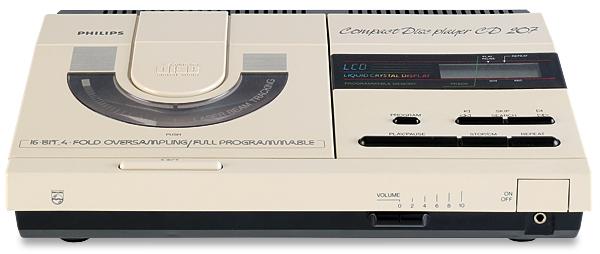
 The aim was to cut costs, yet only by revisiting the tech that kickstarted the company's first entry into the CD market was no performance lost. We fire up this late '80s player
The aim was to cut costs, yet only by revisiting the tech that kickstarted the company's first entry into the CD market was no performance lost. We fire up this late '80s player
In recent Vintage Reviews we have looked at some of the more affordable CD players that arrived during 1986 and 1987. Taking advantage of new technology in order to popularise the format among the wider public, machines such as the Toshiba XR-J9 [HFN Jun '23] and Sony CDP-7F showed that the rigorous rationalisation of every aspect of a CD player's design could yield an attractively priced package that still gave consumers all the perceived benefits of digital audio.
Top Shot
Philips was at the forefront of the race to produce cheaper players, its CDCD (Compact Disc Cost Down) project having already resulted in simplified machines of conventional appearance. However, the public had demonstrated its willingness to buy top-loading players, provided the price was right, which meant the expense and complexity of the motorised loading tray could be dispensed with. For Philips, this was a return to old ground. After all, the Dutch brand's very first player, the CD100 [HFN Oct '11] from 1983, had been a top loader. So in 1987 the company launched what was effectively a 'reborn' CD100 in the form of the CD 207 seen here.
As with all its budget players, Philips was unwilling to compromise on technical quality to meet a price point. Rather, simplified casework and advanced automated assembly methods were used to bring down costs. As a result, inside the CD 207's basic plastic cabinet could be found all the Philips CD technologies that had given its larger models a widely acknowledged leadership in the market. This included the CDM2 single-beam swing arm laser pick-up, the 4x oversampling digital filter, and a stereo DAC now in 16-bit form. Phase linear Bessel Elliptic filters in the analogue stage were also part of the package. This resulted in a machine more technically advanced than many of the most expensive models offered by the large Japanese firms at the time, which still relied on 2x oversampling and a single time-shared DAC.
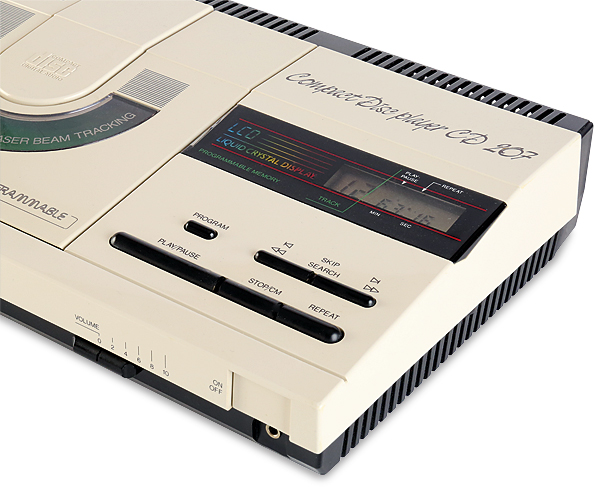
Small Wonder
Compactness was clearly an objective too and aside from the Marantz-designed CD10 portable [HFN Mar '21], the CD 207 was the smallest Philips CD player to date. To achieve this, all the major components were mounted onto a single customised PCB while a smaller version of the CDM2 mechanism, the CDM2P, was used. Space was also saved by making the arm on which the laser pivoted slightly shorter, the other parts remaining largely unchanged. At a time when a lot of hi-fi equipment was taking on an austere and overtly technical appearance, the CD 207 was styled to complement some of the younger, fresher furnishing fashions of the era. Intended to look fun rather than foreboding, it was offered in a choice of off-white, dark grey or bright red. No matching amplifiers, receivers or tape decks were available, the CD 207 being intended for connection to equipment the owner already had.
Graphically Speaking
If you are familiar with the Philips CD100 or the original Marantz CD-63 then the CD 207 will ring more than a few bells. This makes it instantly appealing, though there will be those who find the graphics that adorn the player's top surface, which appear in six different (and clashing) type faces, less attractive. Particularly unsightly to these eyes is the model name, which is written in an overly large form of simulated handwriting. Meanwhile, the LCD unit is labelled in a calculator-type script set against a rainbow coloured background, despite the display itself being monochrome. Yet another font is used on the disc window to remind the owner that this player (like all others) employs a laser.
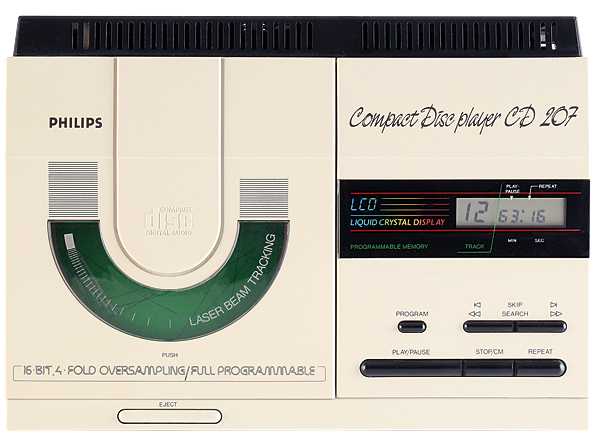
The Philips logo and the marking of the keys are thankfully more sober in styling, but the overall effect looks more like the work of an over enthusiastic design student than something signed-off for production by one of the world's most respected electronics manufacturers.
Perhaps to make matters even worse, there is a thin green dividing line across the display window which marks the boundary between the time and the track sections. At first glance this looks like a scratch in the plastic, making the player appear 'preloved' straight out of the box.
However, get beyond this visual assault and you will find the CD 207 well designed and a pleasure to operate. Some of the controls have a stiff and creaky action, but they all operate logically and do what you would expect them to – compare this to the baffling ergonomics of the Toshiba XR-J9 and Crown CD-110 [HFN Sep '23], for example. And I must admit to having a preference for top-loading players over those with slow and lumbering drawer mechanisms, especially in the case of older machines since there is less to go wrong.
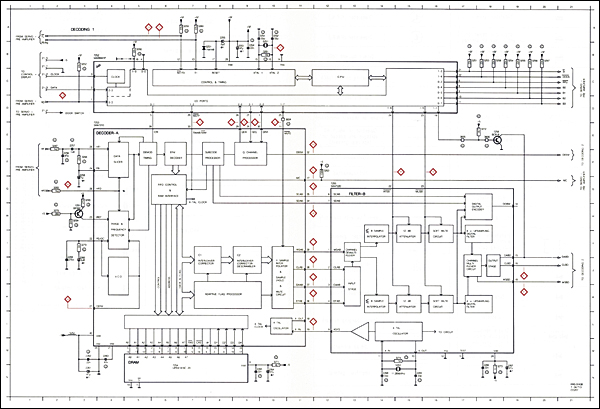
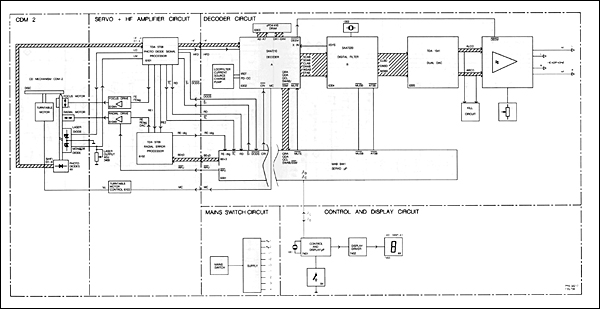
As with the Toshiba XR-J9, the inclusion of a headphone socket in what was a budget priced, mains-operated machine may seem odd, but it does allow for stand-alone desktop use. A separate volume control is provided, and if headphones of reasonable sensitivity are used there is plenty of level available.
Plastic Fantastic
Conventional RCA sockets are fitted at the rear for connection to an amplifier and these provide a standard 2V output, so no problems are presented here. What has been removed is the coaxial digital output, which was a standard feature of most of the early Philips 16x4 models, such as the CD 450 [HFN Aug '14] – even though there was little (if anything) to connect it to at the time. Still, with a TDA1541 converter inside the CD 207 who wants external DACs anyway?
The leisurely CDM2-based mechanism can't match the near-instant loading speed of Crown's optics in the CD-110, but it gets there quickly enough and is virtually silent once the selected track has been found.


















































